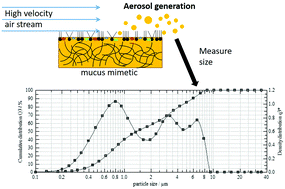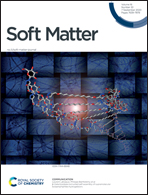Surface rheological properties alter aerosol formation from mucus mimetic surfaces
Abstract
The effects of surface tension and surface viscoelastic properties on the formation of aerosol droplets generated from mucus-like viscoelastic gels (mucus mimetics) during shearing with a high velocity air stream were investigated. Mucus mimetic samples were formulated with similar composition (94% water and 6% dissolved solids, consisting of mucins, proteins, and ions), surface tension (via the addition of surfactant to the mimetic surface) and bulk viscoelastic properties (via crosslinking of mucin macromolecules in the mimetic) to that of native non-diseased tracheal mucus. The surface tension of the mucus mimetic was decreased by spreading one of two surfactants, dipalmitoyl phosphatidylcholine (DPPC) or calf lung surfactant (Infasurf®), on the mimetic surface. Aerosols were generated from the mimetic surfaces during simulated coughing using an enhanced simulated cough machine (ESCM) operating under controlled environmental conditions. The size distribution of aerosol droplets generated during simulated coughing from the surfactant-coated mimetic surfaces was multimodal, while no droplets were generated from the bare mimetic surface due to its high surface viscoelastic properties and high surface tension. The concentration of aerosols generated from the DPPC-coated mimetic was higher than that of the Infasurf®-coated mimetic, even though the surface tension of the two interfaces was the same. The experimental results suggest that a balance of surface elastic behavior and surface viscous behavior is required for the generation of aerosols from the viscoelastic surfaces.



 Please wait while we load your content...
Please wait while we load your content...